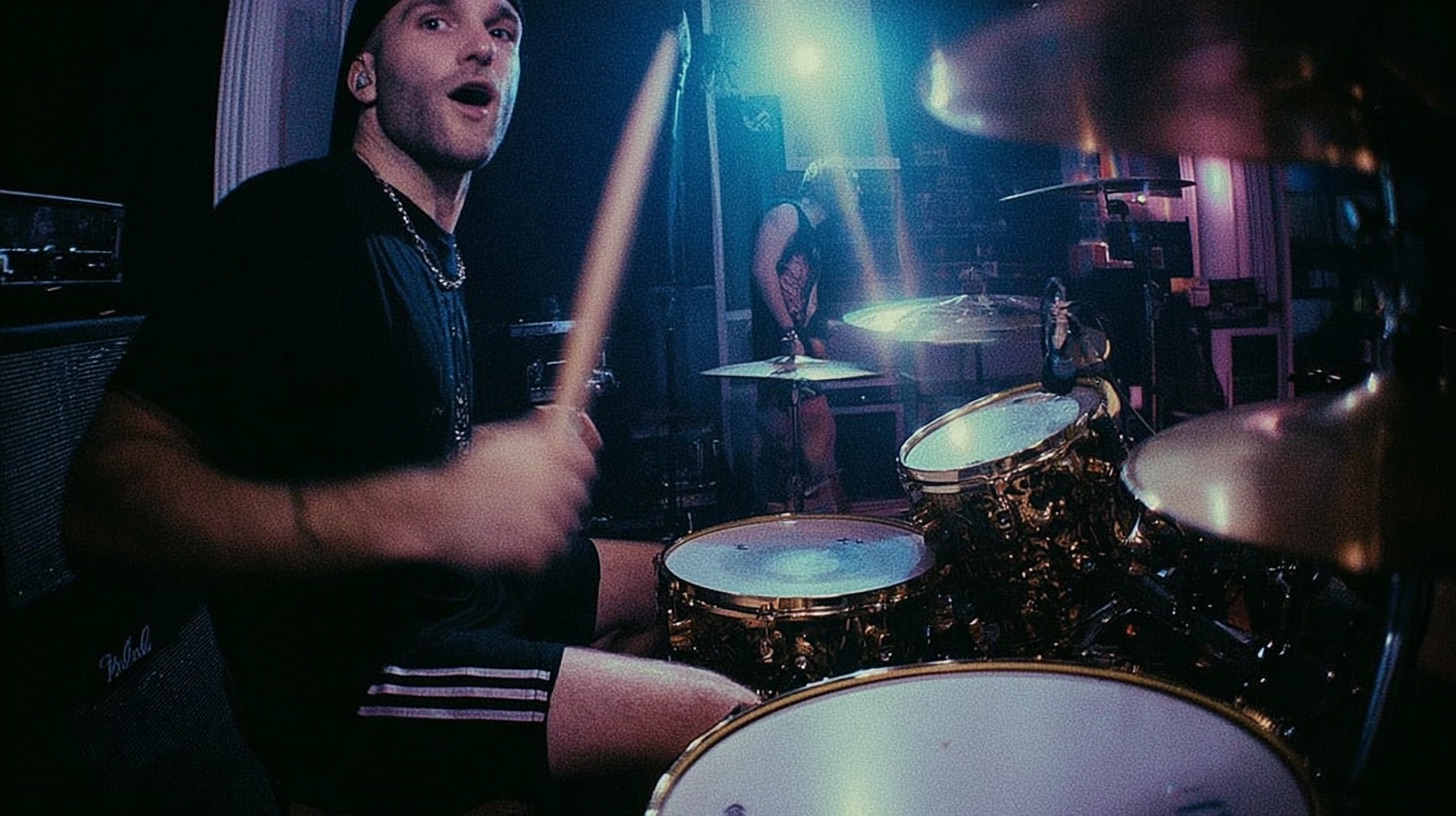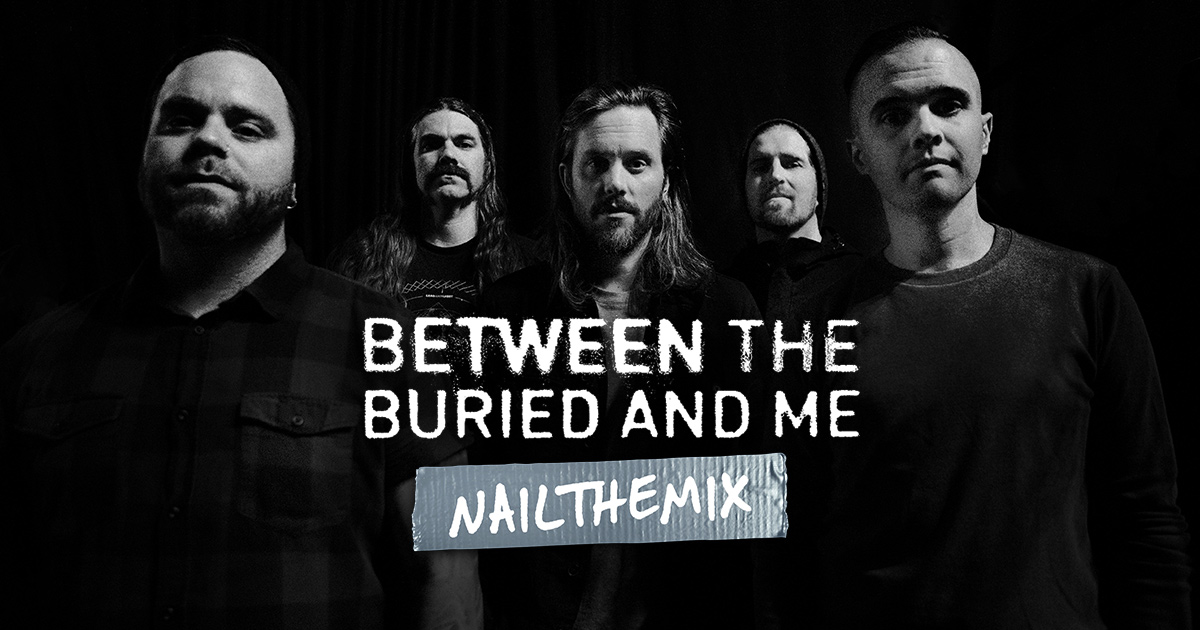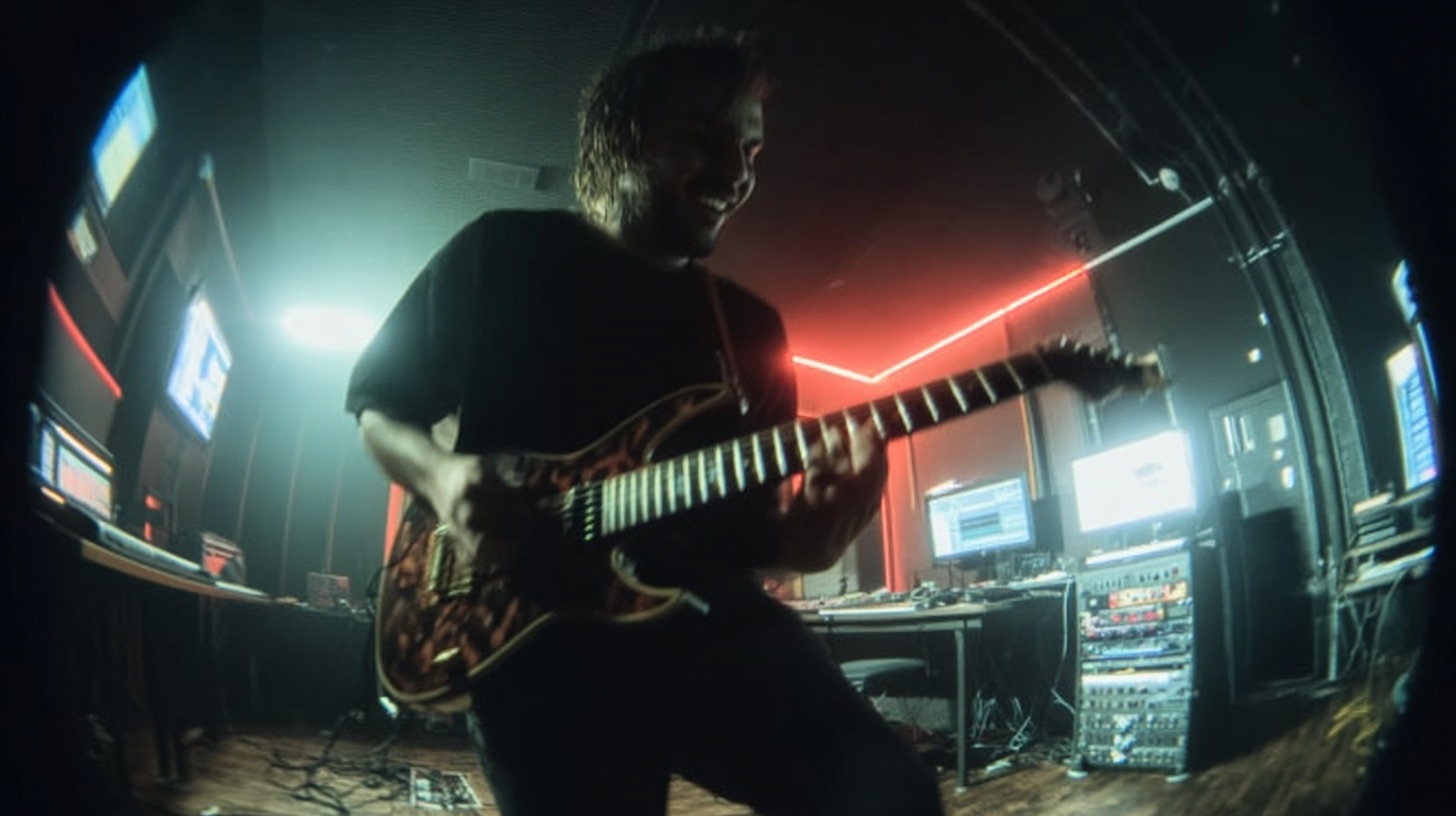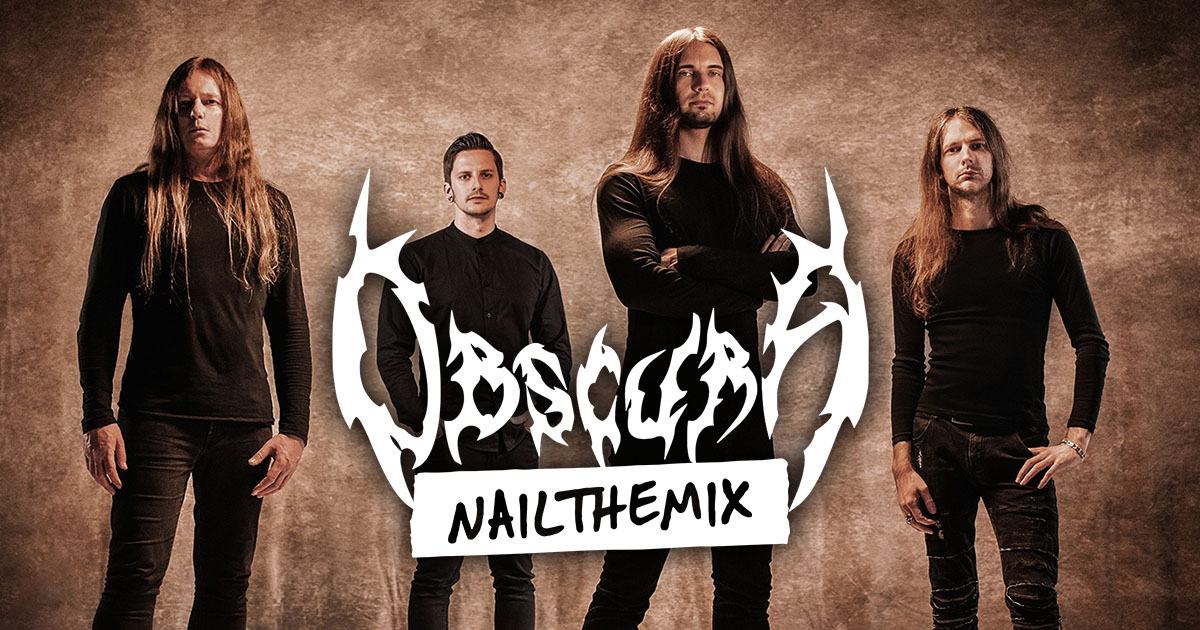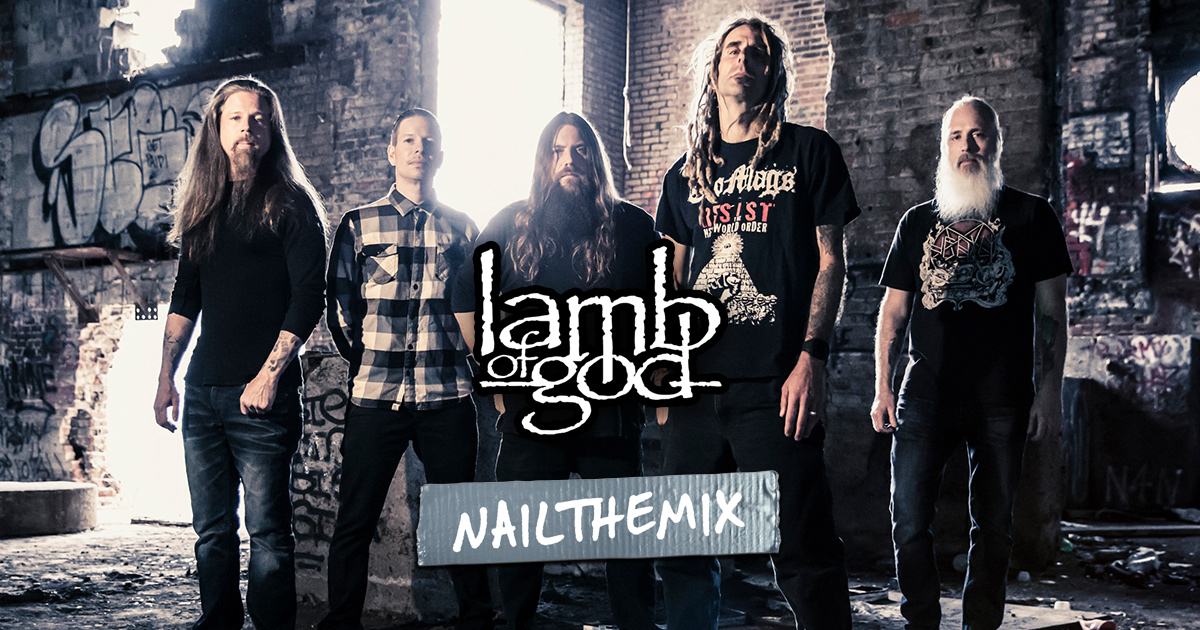
Mixing Lamb Of God: Machine’s Guide to a Massive Stereo Image
Nail The Mix Staff
Lamb of God’s sound is an absolute force of nature. It’s a relentless wall of power, driven by punishing riffs and a rhythm section that hits like a freight train. But how do you create that kind of size and width in a mix without it turning into a chaotic, muddy mess?
We got a masterclass from legendary producer/mixer Machine as he broke down his approach to a Lamb of God track. The big secret isn’t just about panning guitars hard left and right. It’s a delicate balancing act, a philosophy about where to build your width and, crucially, how to protect it from the very elements that are supposed to make it heavy. Prepare to rethink how you handle your low end—this is how you build a powerful mix that’s both monstrously wide and brutally focused.
Building Your Foundation: The Wall of Sound Meets the Mono Core
Before you even touch an EQ on your snare or think about vocal effects, the foundation has to be solid. For Machine, that means establishing the sheer scale of the mix right away, all while making decisions in the context of a loud, finished master.
Start Wide from the Get-Go
No surprises here: the foundation of that “wall of sound” begins with the main rhythm guitars. The first move is to pan those bad boys hard left and hard right. This immediately defines the outer edges of your sonic landscape. It’s the canvas on which everything else will be painted. By establishing maximum width from the very beginning, every other mixing decision is made with this stereo field in mind.
The Game-Changer: Mix into Your Bus Compression
Here’s a workflow tip that separates the pros from the pack. Instead of building your mix and then slapping limiting and compression on the master bus at the end, Machine works into that processing from the very start. He wants to hear how his balance decisions react to the mastering-style compression in real-time.
Why? Because aggressive bus compression changes everything. It alters the relationship between instruments, affects transient response, and can totally shift the perceived balance of your mix. By having it on from the beginning, you’re making thousands of micro-decisions in the environment of your final, loud record. This saves you from the nightmare of having to “chase your tail,” re-adjusting levels after the fact when your compressor suddenly makes your kick drum eat your guitar solo. It’s a forward-thinking approach to achieving a powerful, glued-together sound without the frustrating guesswork.
The Cardinal Rule: Don’t Let Bass Kill Your Width
This is the core of the whole philosophy. Bass is a mono instrument, and it can be your stereo image’s worst enemy if you’re not careful. Machine thinks of a single bass track in three parts: sub, low end, and mid-range. That mid-range is critical. It’s the character, the growl, the part of the bass that codes with the guitars and cuts through on smaller speakers like laptops and phones.
Here’s the trap: As you push up the level of that powerful, mono bass, it starts to dominate the sonic field. Even though your guitars are still panned wide, the sheer energy in the center channel begins to squash your brain’s perception of stereo width. The mix feels narrower and more cluttered.
Machine believes this psychological effect is why many metal mixers unconsciously under-mix their bass—they’re trying to preserve that wide, “guitars, guitars, guitars” feeling. The key is to find the perfect balance. Push the bass up until you can clearly hear its mid-range character and feel its weight, but stop just before it starts to audibly collapse your stereo image. This requires careful listening and targeted EQ strategies to shape that bass mid-range so it complements, rather than fights, the guitars.
Populating the Mix: Creative Placement for Leads and Vocals
With the foundation of wide guitars and a controlled mono core established, it’s time to place the other key elements. Machine’s approach is anything but “set it and forget it,” using placement to add personality and solve problems.
Ghost Your Vocals (Trust Us)
A lot of mixers will build the entire instrumental track before ever un-muting the vocals. Machine does the opposite. He wants the vocals in the mix from the very beginning, even if they’re just “ghosted in” at a very low volume.
Why? Vocals are the lead instrument. They answer musical questions and provide context for the entire song. Having them present, even subtly, helps guide decisions about how other melodic elements, like guitar leads, should sit in the mix. It makes you mix the song as a whole, not just as a collection of instruments.
The Off-Center Lead: A Car Speaker-Inspired Panning Trick
When it’s time to place a melodic guitar lead, the instinct for many is to put it right down the middle. Machine often avoids this, panning the main lead performance slightly to the right.
His reasoning is unconventional but brilliant: in a car, the driver’s leg often partially blocks the speaker on the left side, leaving a clearer path from the right speaker to the ear. It’s a quirky, real-world consideration that leads to a cool creative choice, helping ensure that melodic hook has a clear space to shine.
Creating “Stony” Leads with Panned Doubles
To give a lead part extra size and a unique texture, Machine uses a double-tracked performance. But instead of just using a standard stereo delay or chorus, he takes the second, unique performance and pans it off to the other side. It’s not necessarily a hard-pan, but it’s enough to create a distinct, wide character that feels more organic and “stony” than a simple effect. This makes the lead feel like a single, wide performance with interesting movement, rather than two separate tracks.
Crafting Space: The Delay-Into-Reverb Effect
For that big, wet, “stony” vocal sound, Machine uses a specific and effective effects chain. It’s a stereo delay with its output feeding directly into a reverb. This means the reverb is only processing the delay taps, not the dry vocal. The result is a clean, defined vocal upfront, followed by a spacious, ambient trail of echoes that wash out into a reverb tail. It keeps the vocal intelligible while creating a huge sense of depth.
The Pro Move: Automation for Unstoppable Impact
Static mixes are for amateurs. To make a track truly dynamic and exciting, you need to use automation, especially to solve problems when the mix bus gets slammed.
The Problem: When Drums Crush Your Guitars in the Mix
In a particularly heavy section, Machine noticed the insane power of the tom fills and cymbal crashes was causing the mix bus compressor to clamp down hard. The unintended consequence? Every time the drums went wild, the rhythm guitars got pushed down and momentarily lost their power.
The Solution: The “Total Outsides” Bus Automation
Instead of backing off the bus compression and losing the glue, Machine used a clever routing trick.
- He sent both hard-panned rhythm guitars to a new stereo bus, which he called “Total Outsides.”
- He then automated the volume of this entire bus, riding it up during the heavy drum fill.
Because this volume change happens before the tracks hit the main mix bus compressor, he can push the guitars up to compete with the drums without making the compressor work harder or tucking anything else in. The guitars stay loud and powerful, the drums keep their slam, and the mix remains exciting and dynamic.

100+ Insanely Detailed Mixing Tutorials
We leave absolutely nothing out, showing you every single step
See How It’s Really Done
These techniques from Machine are incredible insights into how a world-class producer builds a massive metal mix. It’s about more than just presets and plugins; it’s a philosophy of balancing width, power, and clarity.
- Start with a wide guitar foundation.
- Carefully balance your mono bass so it adds power without collapsing the stereo image.
- Use creative panning and effects to give leads and vocals their own space.
- Use smart automation to maintain impact in even the densest sections.
This is just a fraction of the knowledge Machine dropped in his full session. Imagine watching him A/B different compressors, dial in that bass mid-range, and automate every little detail from scratch. On Nail The Mix, you can. You can get the actual multi-tracks from bands like Lamb of God and watch the original producer mix the song, explaining every single move.
Lamb Of God on Nail The Mix
Machine mixes "Redneck"
Get the Session
If you’re ready to see how a legendary track like this really comes together, check out the full Lamb of God session with Machine. Take these concepts and learn how to apply them to your own productions to go beyond presets and unlock your sound.
Get a new set of multi-tracks every month from a world-class artist, a livestream with the producer who mixed it, 100+ tutorials, our exclusive plugins and more
Get Started for $1